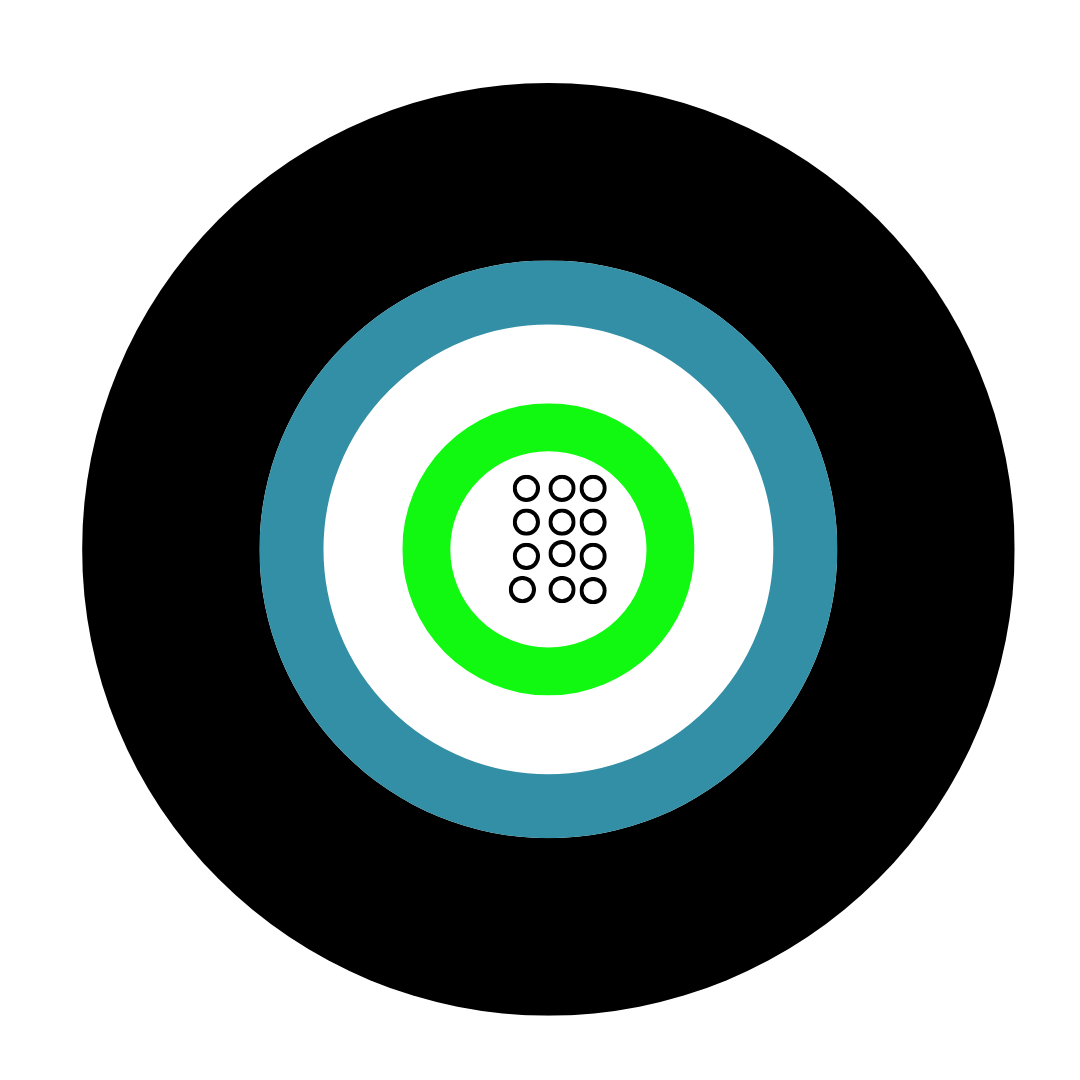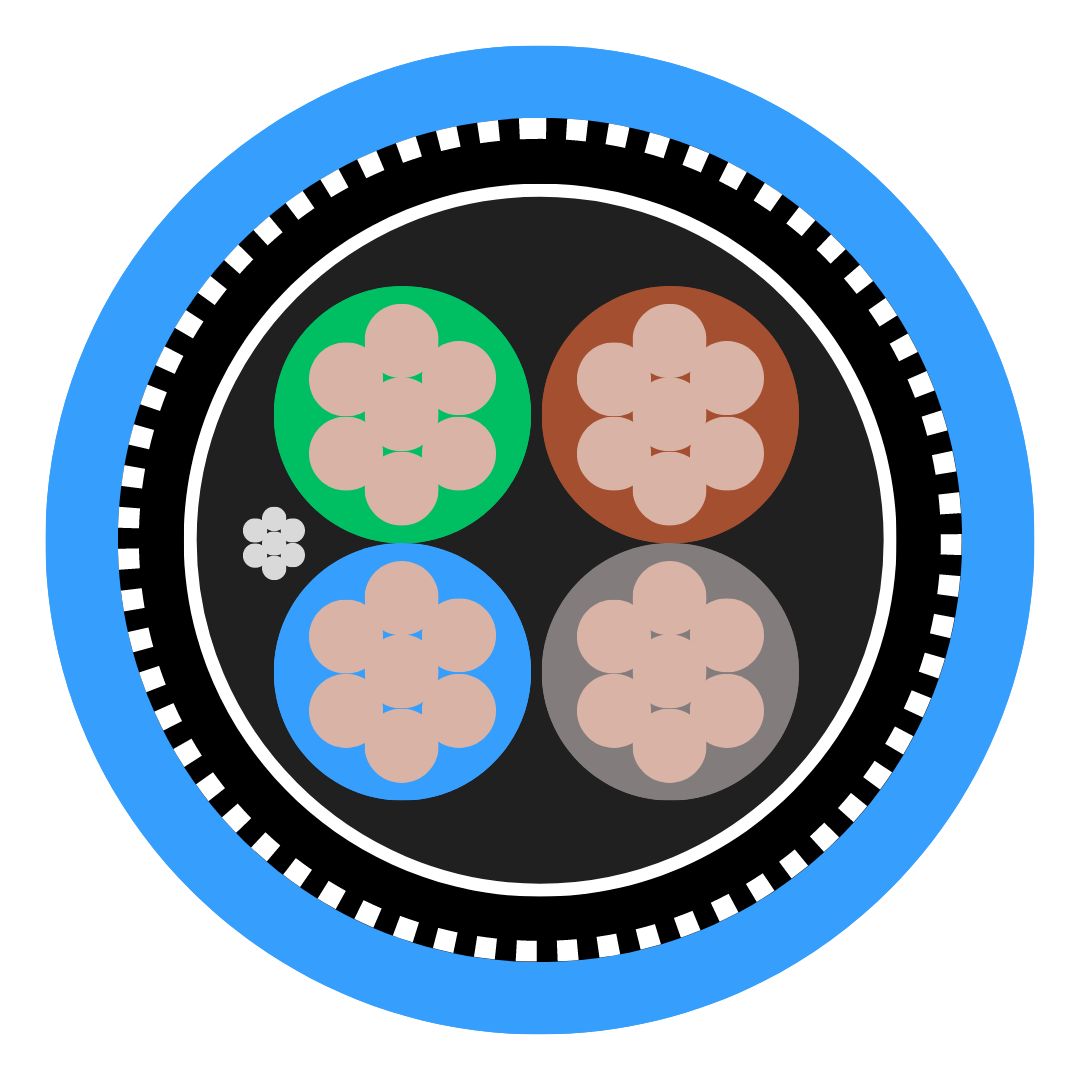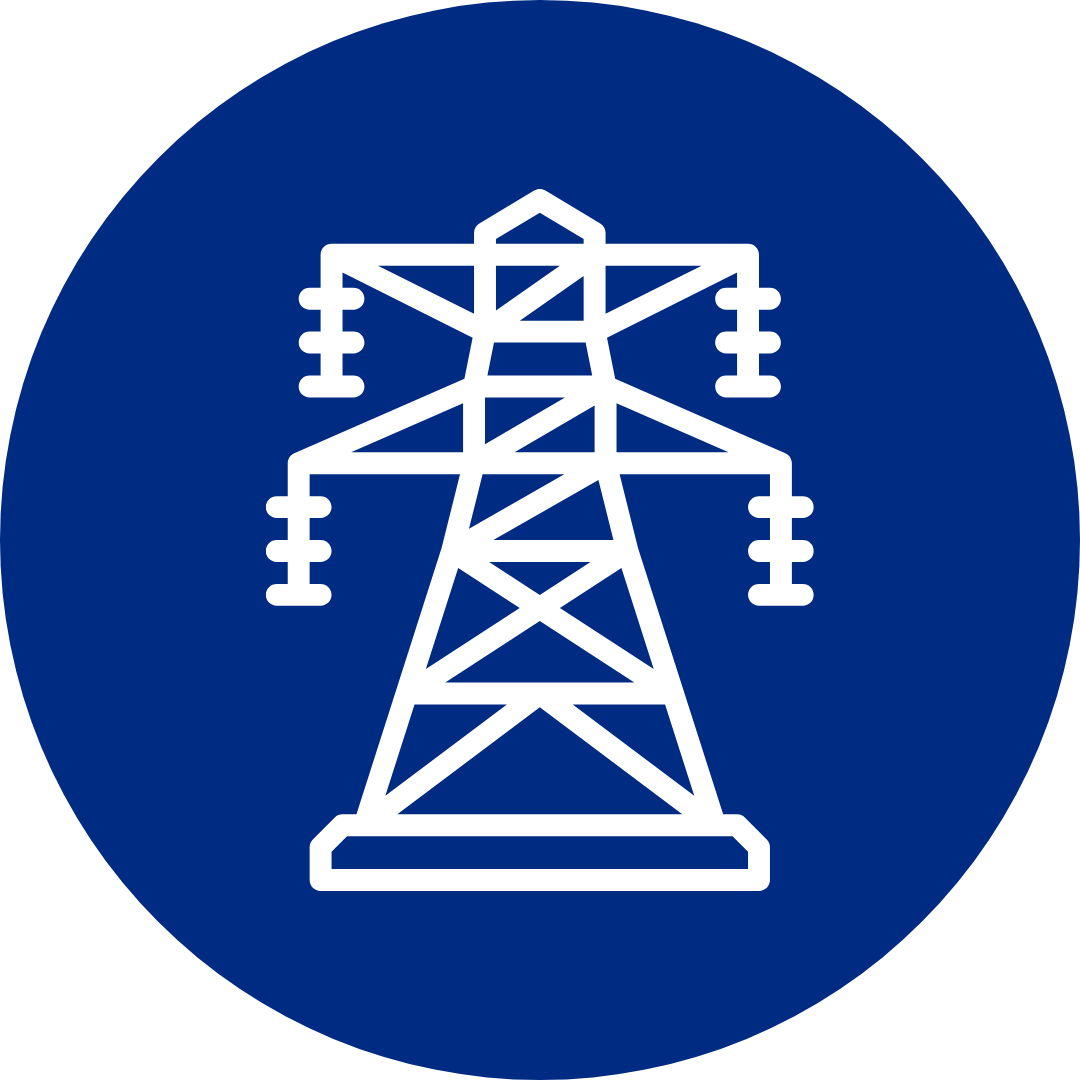Screened cables, often called shielded cables, play an important role in protecting electrical signals from outside interference. A screened cable includes a layer of metal, usually foil or braid, that prevents electromagnetic interference from affecting the wires inside. This design is key for keeping signals clear and reliable, especially in places with a lot of electrical noise, such as factories or hospitals.
On the other hand, unscreened cables do not have this extra metal layer. They are suitable for simple uses where external interference is not a concern, like basic household wiring. Knowing when to choose screened or unscreened cable can make a real difference in how well your equipment works and how safe your setup is.
Key Takeaways
Screened cables help reduce electromagnetic interference.
Unscreened cables are used in low-interference environments.
Choosing the right cable improves performance and reliability.
What Is Screened Cable?
A screened cable, also known as a shielded cable, is a type of electrical cable designed to protect signals from electromagnetic interference (EMI) and radio frequency interference (RFI). It achieves this protection by using a layer of conductive material, such as a metal braid or foil, that surrounds the internal wires.
The main function of the screening is to stop unwanted noise from affecting the signal inside the cable. It also helps to prevent signals from escaping. This is especially important in environments with lots of electrical equipment, where interference can be a problem.
Typical construction of a screened cable includes:
Component | Description |
Core Wires | Carry the electrical signals |
Insulation | Separates and protects each core wire |
Screening | Metal braid, foil, or tape to block interference |
Outer Sheath | Adds additional protection to the cable as a whole |
Screened cables are often used in industries such as audio, broadcasting, telecoms, medical equipment, and industrial automation. They are chosen for applications that need reliable, high-quality signal transmission.
There are several types of screened cable. Common examples include coaxial cables, screened twisted pair cables, and multi-core screened cables. The type of screen—whether foil, braid, or both—can impact its level of protection and flexibility.
When selecting cables for a project, screened options are often preferred in settings where signal integrity is critical and where electrical noise is likely.
What Is Screened Cable Used For?
Screened cable is found in many environments where protection from interference is important. Its main job is to prevent unwanted signals from causing problems with sensitive data or control lines.
Common uses for screened cable include:
Audio and broadcast equipment: It helps keep sound clear and free from noise in microphones, mixing consoles, and speakers.
Medical devices: Many diagnostic and monitoring tools use screened cable to keep their readings precise and reliable.
Industrial control systems: In factories, these cables prevent machine operations from being affected by electrical noise.
Military and aerospace systems: Reliable signal transmission is essential for control, navigation, and communication.
Telecommunications networks: Screened cables support clean, accurate data transfer in telephone, internet, and network wiring.
Application | Purpose |
Audio/broadcast | Reduce noise, improve sound |
Medical equipment | Prevent error in measurements |
Industrial machinery | Protect control signals |
Military & aerospace | Maintain clear communications |
Telecom & networking | Support fast, stable connections |
In environments with heavy machinery, screened cables protect against electromagnetic interference (EMI). They are also used underground and in control panels to support the reliable operation of complex equipment.
Screened cable is chosen when a stable and interference-free connection is required. Its use in sensitive applications ensures data integrity and system safety.
What Are the Types of Screened Cable?
Screened cables, also called shielded cables, use different methods to protect signals from electromagnetic interference (EMI). Different types are used based on how much protection is needed and the application.
Coaxial Cable:
Coaxial cable has a single central conductor, a layer of insulation, a metallic screen (usually copper or aluminium), and an outer jacket. The screen helps to block EMI and is commonly used for high-frequency signals, like television and internet.
Twisted Pair Cable:
A twisted pair cable has two wires twisted together. If the cable is shielded, a foil or braided metallic screen wraps around the twisted pairs. There are overall shielded and individual pair shielded options. Shielded twisted pair cables are used widely in data networking and telephone lines.
Multi-Conductor Screened Cable:
These have several insulated wires, each with a possible individual screen (pair screen) or an overall cable screen. They are often found in control systems and industrial automation where multiple signals run side by side.
Instrumentation Cable:
Instrumentation cable is designed for low-level signals in areas with high interference. It usually includes both individual and overall screening for maximum protection. Typical uses are in measurement, control, and data systems in factories.
Comparison Table
Cable Type | Screening Method | Typical Use |
Coaxial Cable | Metallic braid/foil | TV, Broadband |
Twisted Pair Cable | Foil or braid (overall/pair) | Networking, Telephony |
Multi-Conductor | Individual and/or overall screen | Control panels, Industry |
Instrumentation | Pair and overall screen | Measurement, Automation |
Choosing the right screened cable depends on the type of signals, amount of EMI, and application needs. Each cable offers a different way to keep signals safe and reliable.
What Is Unscreened Cable?
Unscreened cable, often called unshielded cable, is a type of wiring that does not have a metal screen or shield around its inner conductors. Instead, it relies on insulation and the way the wires are twisted together to minimise interference.
The most common form is the Unscreened Twisted Pair (UTP) cable. In UTP cables, two wires are twisted around each other in pairs. This design helps reduce interference from nearby cables and devices, but it is not as effective as screened cables in environments with heavy electrical noise.
Key Features of Unscreened Cables:
No metal shield or screen
Relies on twisted pairs and insulation
Lightweight and flexible
Lower cost compared to screened cables
Feature | Unscreened Cable (UTP) |
Shielding | None |
Weight | Light |
Flexibility | High |
Cost | Lower |
EMI Protection | Basic (via twists) |
Unscreened cables are widely used in home and office networks where electromagnetic interference (EMI) is low. They are easy to install and often chosen for their flexibility and cost savings.
These cables are found in telephone wiring and standard Ethernet networks. While they offer no extra protection against EMI, for most indoor uses, their design is usually enough to provide reliable connections.
Screened Cable vs Unscreened Cable: Key Differences
A screened cable has a metal layer or shield inside the cable. This shield is often made from copper braid, aluminium foil, or similar materials. It surrounds the wire pairs to block unwanted signals and reduce electromagnetic interference (EMI).
In contrast, an unscreened cable does not have this extra shielding. It only has pairs of wires twisted together with basic insulation around them. Without the shield, unscreened cables are lighter and usually cost less.
The main purpose of the screen in a cable is to lessen the effects of electromagnetic interference and manage high-frequency signals. EMI can come from nearby electrical equipment like motors or fluorescent lights. Screened cables help protect data signals in noisy environments.
Key differences can be compared in the table below:
Feature | Screened Cable | Unscreened Cable |
Shielding | Yes (metallic screen) | No shielding |
EMI Protection | High | Low |
Flexibility | Less flexible | More flexible |
Cost | More expensive | Less expensive |
Best Use | High EMI areas | Low EMI areas |
Screened cables can be less flexible because of the shield, which sometimes makes installation harder in tight spaces. However, they are often chosen for locations with a lot of electronic noise.
When dealing with high-frequency data or sensitive communication, the extra protection of a screened cable helps keep signals clear. In less demanding environments, unscreened cables are usually enough and easier to work with.
Frequently Asked Questions
Screened cables help reduce problems from electromagnetic interference while unscreened cables are typically used in simpler, low-noise environments. Several differences exist in how these cables are made, used, and identified, and understanding these details can help in choosing the right type for each application.
What is the difference between screened and unscreened cable?
Screened cables have a special layer, usually made of metal, that protects the wires inside from outside electrical noise. Unscreened cables do not have this layer and are more affected by interference.
Screened cables are used where reliable, clean signals are important, such as audio studios or factories. Unscreened cables are suited for places with little interference, like basic home wiring.
What does it mean for a cable to be screened?
When a cable is screened, it means there is a metal shield around the inner wires. This shield blocks unwanted signals from sources like machinery, radios, or other cables.
A screened cable helps keep the data inside free from interference, making sure the signal stays strong and accurate.
Is screened cable the same as shielded cable?
Yes, "screened" cable and "shielded" cable are different terms that refer to the same thing. Both include a layer of metal, such as copper or aluminium, to protect the cable from electromagnetic interference.
The terms are often used interchangeably, though some industries may prefer one term over the other.
How to tell if a cable is shielded or unshielded?
A shielded cable will show an extra layer under the main rubber or plastic covering. This layer can look like a shiny foil wrap or a braided wire mesh just underneath the outer jacket.
Unshielded cables do not have this metallic layer and only have insulation around the wires. If you are unsure, checking the markings on the cable or the product details from the manufacturer often helps.
What is the difference between shielded cable and normal cable?
A shielded cable has a built-in metal shield that blocks electrical noise from nearby sources. A "normal" cable usually means an unscreened or unshielded cable, which does not have this extra protection.
Shielded cables are used for sensitive signals and in places with lots of electrical equipment. Normal cables are better for simple power or basic data needs.
What type of cable is fully shielded and screened, extends the frequency range, and provides full support for 40GBASE-T Ethernet networks?
A fully shielded and screened Category 7A (Cat7A) cable is designed for high-speed Ethernet networks. These cables can carry frequencies up to 1000 MHz and support 40GBASE-T for speeds up to 40 gigabits per second.
Cat7A cables have extra shielding for each pair of wires and around the whole cable, helping to prevent signal loss and interference in demanding environments.
Are shielded RJ45 connectors better?
Shielded RJ45 connectors are better when used with shielded cables in environments with a lot of electrical noise. They help maintain the shield all the way through the connection, giving extra protection against interference.
For many home or basic office uses, unshielded connectors and cables are usually enough. In settings with sensitive signals or strong sources of interference, shielded connectors are recommended.
Alarm Cable
Arctic Grade Cable
Armoured Cable
Audio & Speaker Cable
Auto Cable
Bare Copper
Belden Equivalent Cable
Co-axial Cable
Data Cable
DC Telecom Cable
Defence Standard Cable
Emergency Lighting & Fire Detection Cable
EV Cable
Festoon
![Loose Tube Fibre Cross Section]()
Fixed Wiring PVC & LSOH Cable
Flatform
Flexible Control Cable
Flexible PVC Cable
Flexible Rubber Cable
General Wiring Cable PVC & LSOH
High Temperature Cable
High Voltage Cable
![5308 p1 t2 cat Cross Section]()
LSOH Flexible Cable
Medium Voltage Cable
NYY & N2XH Cable
Protected Wiring Cable
Silicone Cable
Solar Cable
Split Concentric Cable
Spiral Cable
Temporary Power Cable
Tri-Rated Cable
Welding Cable
Alarm Cable
Arctic Grade Cable
Armoured Cable
Audio & Speaker Cable
Auto Cable
Bare Copper
Belden Equivalent Cable
Co-axial Cable
Data Cable
DC Telecom Cable
Defence Standard Cable
Emergency Lighting & Fire Detection Cable
EV Cable
Festoon
![Loose Tube Fibre Cross Section]()
Fixed Wiring PVC & LSOH Cable
Flatform
Flexible Control Cable
Flexible PVC Cable
Flexible Rubber Cable
General Wiring Cable PVC & LSOH
High Temperature Cable
High Voltage Cable
![5308 p1 t2 cat Cross Section]()
LSOH Flexible Cable
Medium Voltage Cable
NYY & N2XH Cable
PAS - BS5308 Instrumentation Cable
Protected Wiring Cable
RS-232 Cable
RS-485 Cable
Silicone Cable
Solar Cable
Split Concentric Cable
Spiral Cable
Telephone Cable
Traffic Signal Cables
Temporary Power Cable
Tri-Rated Cable
Welding Cable
Airports
Automation & Process Control
![Automotive]()
Building & Construction
Communication & Telecommunication
Data Centres
Defence
![DNO 1]()
E-Mobility
Food & Beverage
Marine & Offshore
Mining, Drilling & Tunnelling
OEMs
Oil, Gas & Petrochemical
Rail & Metro
Renewable Energy
Switchgear
Power
Water Treatment













































